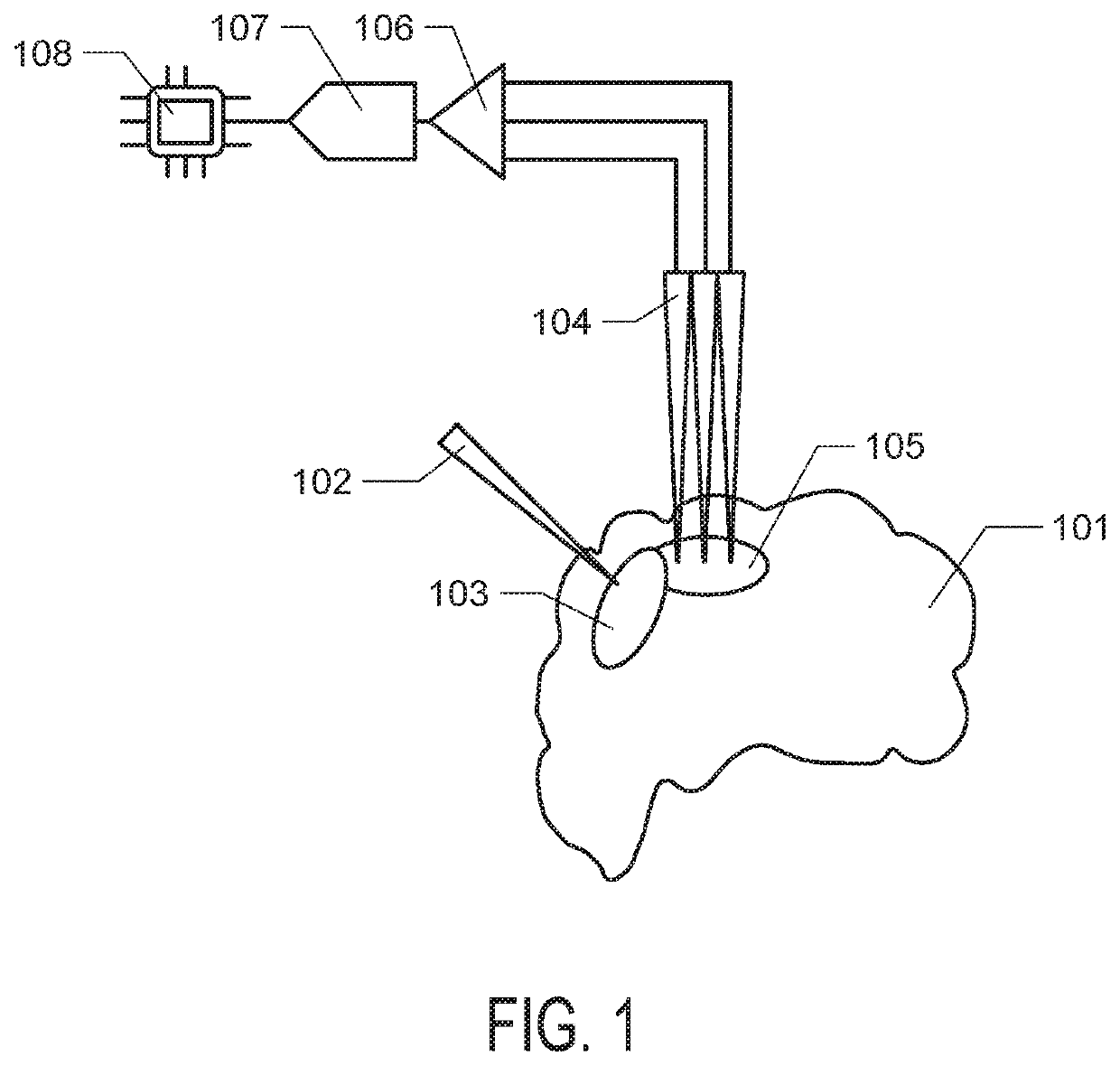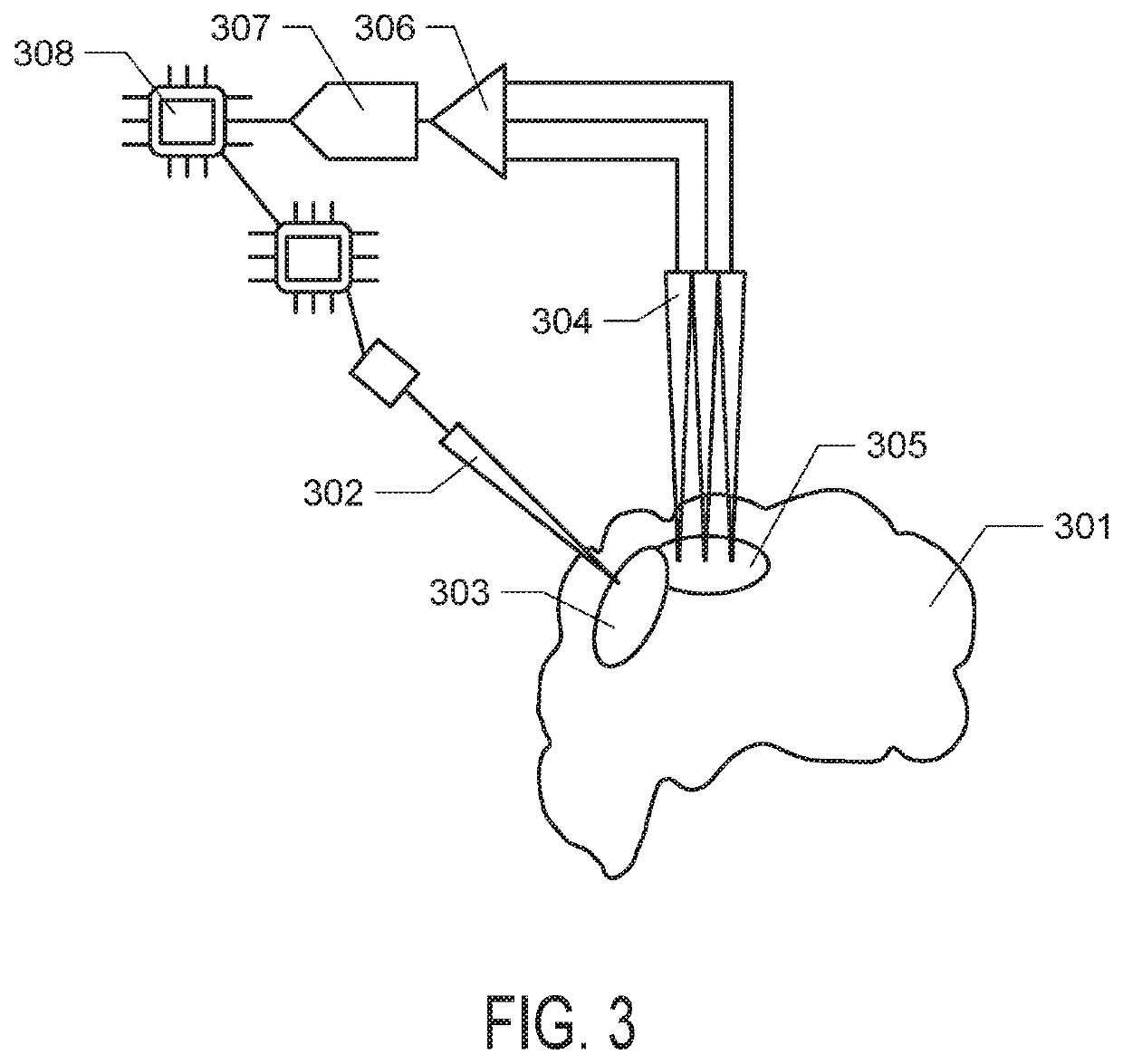Removal of Stimulation Artifact in Multi-Channel Neural Recordings
a neural recording and artifact technology, applied in the field of removal of stimulation artifacts in multi-channel neural recording, can solve the problems of affecting the measurement affecting the effective measurement of neural responses, and affecting the accuracy of response signals, so as to achieve accurate measurement of stimulation artifacts and effective neural response measurement
- Summary
- Abstract
- Description
- Claims
- Application Information
AI Technical Summary
Benefits of technology
Problems solved by technology
Method used
Image
Examples
example 1
Stimulation Artifact Estimation and Removal
[0070]One adult male Rhesus macaque (Macaca mulatta), aged 11 years and weighing 12 kg, participated in this study. Two 96-channel silicon microelectrode arrays (Blackrock Microsystems, Salt Lake City, Utah) were chronically implanted into the left sensorimotor cortex. Each array consisted of 96, 10 mm long electrodes, spaced at 400 μm and covering a 4 mm by 4 mm area. One array, used for delivering stimulation, had tips coated with sputtered iridium oxide and was implanted over primary somatosensory cortex (Brodmann area 1, S1). The other, used for recording, had tips coated with Platinum and was implanted over primary motor cortex (Brodmann area 4, M1).
[0071]Electrical stimulation waveforms were delivered using an optically-isolated, computer-controlled stimulator (IZ2; Tucker-Davis Technologies, Alachua, Fla.). Symmetric, biphasic, cathode-leading, charge-balanced, square-wave “Lilly” waveforms were delivered, with an interphase interval...
example 2
Comparison of Stimulation Artifact Removal Methods
[0078]Electrodes chronically implanted in the primary somatosensory cortex of a rhesus macaque were used to deliver stimulatory pulses and signals were recorded by recording electrodes in the motor cortex. The methods of the invention were applied to estimate stimulation artifact. These methods were compared to two commonly employed stimulation artifact mitigation techniques: template subtraction and blanking (5 ms after each pulse). While blanking is of limited practical use, as it also rejects neural signals, it was included in the comparison to provide a baseline level of performance The performance of the novel methods of the invention was superior to both template subtraction and blanking.
[0079]Stimulation was first achieved using single channels (that is, only one channel could be stimulating at a time) and the effectiveness of each stimulation artifact removal method was quantified as a function of neural acquisition sampling ...
PUM
 Login to View More
Login to View More Abstract
Description
Claims
Application Information
 Login to View More
Login to View More - R&D
- Intellectual Property
- Life Sciences
- Materials
- Tech Scout
- Unparalleled Data Quality
- Higher Quality Content
- 60% Fewer Hallucinations
Browse by: Latest US Patents, China's latest patents, Technical Efficacy Thesaurus, Application Domain, Technology Topic, Popular Technical Reports.
© 2025 PatSnap. All rights reserved.Legal|Privacy policy|Modern Slavery Act Transparency Statement|Sitemap|About US| Contact US: help@patsnap.com



